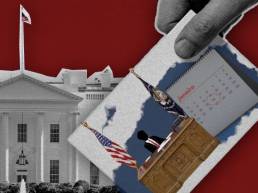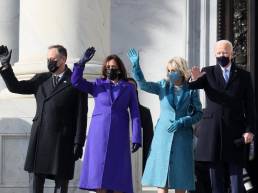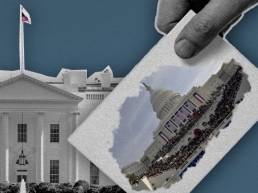2020 is the year for presidential elections in the United States. Of course, American politics has invaded televisions, newspapers, and radio all over the world, and Portugal is no exception. Caucuses, primaries, delegates, superdelegates, ticket, are all terms that we hear about, but do we know what all this means?
Who’s going to vote?
There are currently two possible scenarios for the next four years: either Trump is re-elected (it is common for the incumbent president to have no opposition within the Party) and remains in the White House, or North-Americans will elect a Democratic candidate. Until news to the contrary, there are no prominent candidates thinking of an independent candidacy, as happened with Ross Perot in 1992 (and who contributed to the non-re-election of George H. W. Bush).
When are there elections?
The elections for President of the United States, the Head of State and Government of the U.S., are held every four years. The process, very different from the one we know in Portugal, lasts approximately 1 year, from the beginning of the primaries to the inauguration of the new President, on January 20th of the year following the elections (in this case, January 20th of 2021). Elections are scheduled for November 3rd of 2020, on a Tuesday.
How are the candidates elected?
The process begins with the campaign to choose the presidential candidate of each party. This candidate is defined locally by the different states and may take the form of primaries or caucuses. In both primaries and caucuses, election processes vary by state. So there are States, like Iowa, that elect their candidate by caucuses and others, like New Hampshire, that have primary elections.
Both in the primaries or in the caucuses, presidential candidates are not directly elected, but delegates, who in turn will support a candidate at the national convention of the party. The choice of the candidate will be completed when one of them obtains more than half of the votes of the delegates.
What is a Caucus?
Caucuses are party meetings, organized by the respective parties, in which they decide and publicly declare support for a candidate. During these meetings, participants are divided into groups according to the candidate they support. The number of supporters in each group determines the delegates that the respective candidate gets.
The primaries are elections at the state level, in which candidates are subject to the anonymous popular vote.
This year, on March 3rd, is the day known as Super Tuesday, a day during the primaries, in which a larger number of states vote for the presidential candidate.
Once the candidate of each Party has been decided, and they have chosen their candidates for the US Vice-Presidency, who will accompany them on the campaign trail, the election campaign for President of the United States begins.
The candidates are already chosen. What’s next?
Once the candidates have been known throughout the various primaries that culminate in the conventions, the campaign kicks off for a head-to-head phase between the two candidates – one Republican, one Democrat – culminating in the Election Day, which takes place Tuesday following the first Monday of November, scheduled for the 3rd of November of 2020.
But if this is the day where it all begins, it’s not where it ends. The process continues for a few more months. Citizens over the age of 18 can vote to elect the President. But they don’t do it directly on Election Day. Instead, they elect voters, who make up an electoral college.
What is the Electoral College?
Each state has a number of voters equal to the sum of the members of the House of Representatives elected by that State and its 2 Senators. As such, the total number of delegates is 538 and the number of delegates for each State depends on the corresponding population since it is depending on the population that determines the number of Representatives (members of the House of Representatives, which belongs to the U.S. Congress).
Each delegate is entitled to one vote and, as such, to win the election, it is necessary to have at least 270 votes in the electoral college.
When is the President formally chosen?
After Election Day, delegates gather in their respective states on the first Monday after the second Wednesday in December. On that day, they vote on their choices for President and Vice-President.
But it’s not that day that you count the votes. Only on January 6th of the following year, the Congress meets to count the votes arising from the electoral college. At that time the election result is officially announced: the names of the President and Vice-President of the United States.
On the 20th of January, the President and Vice-President take office.
What if no candidate gets the 270 delegates needed?
Theoretically, it’s possible that neither Republicans nor Democrats get the 270 delegates needed to win the election. If this happens, which would have to result in a tie of 269 delegates each, the U.S. Constitution stipulates that it is up to the House of Representatives to choose who will be President of the United States. The Senate, the upper house of Congress, has the responsibility of appointing the Vice-President.
Related Posts
25 de January, 2021
Observador Newsletter: What can a President do in it’s first hour in office? Interview with Jim Costa
The power and limitations of governing…
21 de January, 2021
‘América Vinte Vinte’: Biden’s inaugural adress and first decisions
This week, Nuno Severiano Teixeira,…
18 de January, 2021
Observador Newsletter: Why does the inauguration matter?
The importance of the new president's…



